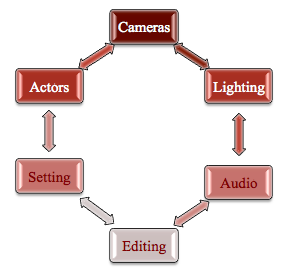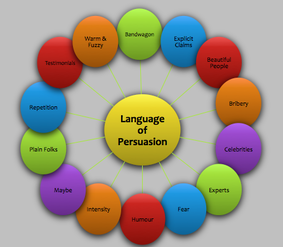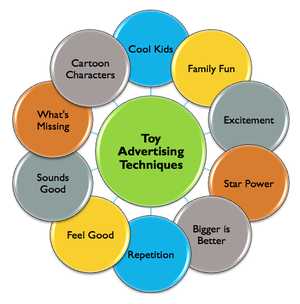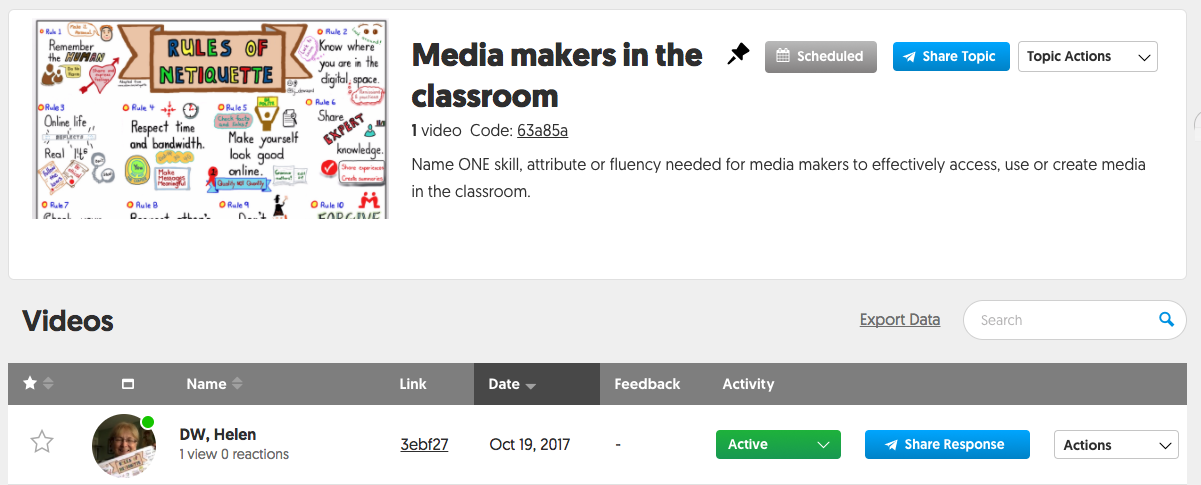7.2 Storytelling in Fluid Environments
|
This week we will focus on the following outcomes. You will:
Required Readings
|
|
Understanding Moving Images and Fluid Environments
The "Language of Moving Images"
“Put cameras into the hands of young people and you have empowered them to tell stories and to create their own personal narratives.
It’s that simple.” P. 106
It’s that simple.” P. 106
This statement by Frank Baker introduces us to the potential and possibilities when providing opportunities for students to engage with moving images. To be a literate member within current context means “one must know how to communicate not just with written and verbal ‘texts’, but with visual and aural texts as well.” (Baker pg. 109)
Critical viewing entails knowing “what to look for and what to look at” (Baker p. 109). The process includes “analysis, deep reading, deconstruction and production” (Baker p. 109). When teachers remember that television and film is text “designed to be read (analyzed) and produced” they can involve students in a process, as outlined by Renee Hobbs, of accessing, analyzing, creating, reflecting and taking action (Renee Hobbs) with the “language of moving images” (Baker p. 109)
In previous sessions we focused on advertising so we will continue by examining commercials as a story – written, constructed and presented for an intended audience with content, techniques and messages designed to sell a product, idea, issue or organization. ‘Moving image as text’ will communicate a message from a specific point of view. Authoring choices and techniques are applied to create the intended message. (Baker p. 110)
Critical viewing entails knowing “what to look for and what to look at” (Baker p. 109). The process includes “analysis, deep reading, deconstruction and production” (Baker p. 109). When teachers remember that television and film is text “designed to be read (analyzed) and produced” they can involve students in a process, as outlined by Renee Hobbs, of accessing, analyzing, creating, reflecting and taking action (Renee Hobbs) with the “language of moving images” (Baker p. 109)
In previous sessions we focused on advertising so we will continue by examining commercials as a story – written, constructed and presented for an intended audience with content, techniques and messages designed to sell a product, idea, issue or organization. ‘Moving image as text’ will communicate a message from a specific point of view. Authoring choices and techniques are applied to create the intended message. (Baker p. 110)
Analyzing the Language of Moving Images
|
The language of moving images, according to Frank Baker (pg. 111) includes:
|
Fluid Environments
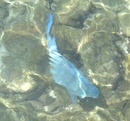
Fluid environments are defined by Annette Lamb as places that “use multiple modes of communication to experience and convey a complex, interactive message” where the “strengths of each media create synergy”. When designing fluid teaching and learning environments, Lamb suggests the key is “connecting students to resources as well as tools for building social and collaborative connections”.
Teachers who build fluid environments establish structures for safe and manageable exploration, creation and sharing for their students. Teachers can fluidly combine fiction, non-fiction, text & image through “multiple channels of communication” so students explore topics across content areas. (Fluid Environments for Life-Long Learning, A. Lamb website)
She suggests that educators ask
Teachers who build fluid environments establish structures for safe and manageable exploration, creation and sharing for their students. Teachers can fluidly combine fiction, non-fiction, text & image through “multiple channels of communication” so students explore topics across content areas. (Fluid Environments for Life-Long Learning, A. Lamb website)
She suggests that educators ask
- "What are the big questions?"
- "What resources will help my students explore the big question or essential ideas?"
- "How can I share, communicate, and engage students in this message while keeping it connected to the curriculum expectations for media literacy?"
Accessing and analyzing toy commercials
|
In small groups
Additional Resources when looking for Ads
|
Visit Frank Baker's website to learn more about toy commercials and link to additional resources, particularly his article titled Toy Ad Tricks - Would You Fall For Them?
You can also view a series of videos:
|
Deconstructing an Ad
- View these video clips without the images – sound only – write down what you hear.
- View the same clip a second time with sound and images - write down all you hear and see. What is being sold? What techniques are applied to sell this message?
- View one final time - with a partner deconstruct one element of the language of moving images - the cameras, lighting, audio (music, sounds, voice), setting, editing, actors.
- Reflect and Connect: Be prepared to share your findings and insights from the process and product of this exercise.
- Followup - View some of the TV ads from this list: AdWeek 10 Best Commercials of 2012
|
|
|
Deconstructing video

Deconstructing a film clip (Baker p. 125)
FIRST: View a clip from the movie ET. Be prepared to discuss what you see? Hear? Feel? THEN: Deconstruct the elements of the language of moving images - cameras, lighting, audio (music, sounds, voices), setting, editing, actors - using the viewing guides presented in Media Literacy in the K-12 Classroom, Film Analysis Cards (pg. 126-127). This will identify the focus while you are watching the film clip. During this second viewing, write down what did you see, hear and feel from the focus identified on your card. REFLECT: How did this focus change your viewing experience from the first to the second viewing? Why? |
ET - The MOVIE
|

Deconstruct to Reconstruct
Tinkering and playing with advertisement creation can involve using a storyboard script file such as the sample provided here. It can be used and applied to BOTH the deconstruction of media messages in the analyzing process AND in the construction of media production when creating advertisements or stories in the classroom. Keep this template handy as you begin your own media crafting. |
| ||||||
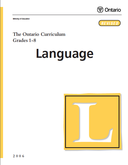
Ontario Curriculum Expectations - links to the 'language of moving images'
Explore the application of moving images and fluid environments to your work as an educator in the Ontario context.
Examine the Language Arts Curriculum Document - Media Expectations to determine which ones can be applied to the analysis, access, deconstruction, creation, writing, production and showcasing of moving images. This can be for any topic, but our focus here is on toy advertising, general advertising and public service announcements. Share your findings and ideas with the whole group.
Explore the application of moving images and fluid environments to your work as an educator in the Ontario context.
Examine the Language Arts Curriculum Document - Media Expectations to determine which ones can be applied to the analysis, access, deconstruction, creation, writing, production and showcasing of moving images. This can be for any topic, but our focus here is on toy advertising, general advertising and public service announcements. Share your findings and ideas with the whole group.
|
Reflect and Connect:
Questions to ask yourself -
|
|
Resources/Links:
- Frank Baker, Media Smart Tips - I Want That
- Frank Baker, The Language of Film
- Frank Baker, Teaching Media with Technology, Learning and Leading, ISTE
- Top Ten Toy Commercials of All Time
- Renee Hobbs - Media Education Labs: 18 unit curriculum (teacher's guide, lesson plans, videos to view before and with students)
Tinkering with FlipgridPart of today's media making environment includes open and accessible video response systems such as Flipgrid. The option for ONE free grid to share student responses can be a powerful teaching/learning tool where media and digital literacies can become integrated into the access, use and create sequence.
Post a response if you'd like. This grid will CLOSE and become password protected after today's class. |
